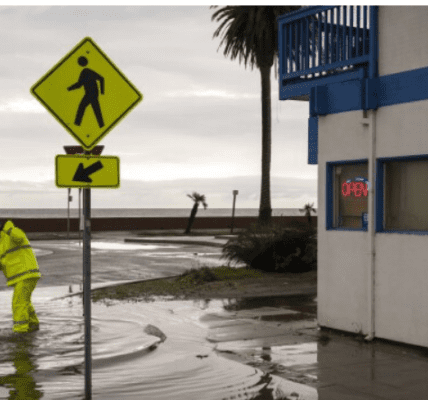Narrow Escape: Small Plane Lands Safely After Door Falls Off Midflight
Analysis of the Incident and Implications for Aviation Safety
In a dramatic turn of events, a small plane carrying two individuals narrowly avoided disaster when one of its doors fell off midflight over Stiglmeier Park in Cheektowaga, New York. The harrowing incident, which occurred on Monday evening, sparked immediate response efforts from emergency services and raised critical questions about aviation safety and the reliability of aircraft maintenance protocols.
At approximately 6 p.m., officials at the Cheektowaga Police and Fire Dispatch received a distress call from Buffalo International Airport, alerting them to the malfunctioning aircraft. The small plane, with two occupants onboard, reported the loss of its door while flying over the area of Stiglmeier Park. In response, authorities swiftly coordinated efforts to ensure the safety of both the aircraft and its occupants. Despite the gravity of the situation, the pilot managed to execute a safe landing, averting potential injuries and property damage.
Following the emergency landing, law enforcement officers initiated a thorough search of the vicinity surrounding Stiglmeier Park in an attempt to locate the missing door. Despite extensive efforts, the door has yet to be recovered. While the absence of reported property damage or injuries provides some relief, the failure to locate the detached door raises concerns about potential hazards and underscores the need for diligent safety measures.
The sudden loss of a door midflight raises significant questions about the underlying causes of the malfunction. While authorities have refrained from speculation, several factors may have contributed to the door’s detachment, including mechanical failure, structural weaknesses, or inadequate maintenance procedures. As the investigation unfolds, aviation experts will closely scrutinize these factors to identify lapses in safety protocols and prevent similar incidents in the future.

Implications for Aviation Safety: Lessons Learned and Precautionary Measures
The incident serves as a sobering reminder of the inherent risks associated with air travel and the paramount importance of prioritizing safety measures. Aviation authorities and operators must remain vigilant in implementing robust maintenance procedures, conducting regular inspections, and adhering to stringent safety guidelines to mitigate the risk of in-flight emergencies. Additionally, pilots’ training in handling unexpected situations is essential in ensuring the safety and well-being of passengers and crew members.
As the investigation progresses, stakeholders in the aviation industry must address vulnerabilities in aircraft maintenance practices and bolster preparedness for unforeseen events. Enhanced training programs, increased oversight, and improved communication channels between maintenance crews and flight operations personnel can help identify potential issues before they escalate into safety hazards. By fostering a culture of safety and accountability, the aviation community can mitigate risks and enhance the reliability of air travel.

Amidst the technical and procedural considerations, it is crucial to recognize the role of pilots and emergency responders in mitigating the impact of aviation incidents. The pilot’s skillful handling of the aircraft during the emergency landing, coupled with the swift response from emergency services, undoubtedly played a crucial role in averting a potential disaster. Their professionalism and dedication to ensuring the safety of all onboard exemplify the importance of human factors in aviation safety.
Read More News:
- Colorado Lawmakers Pave the Way for Adult Education Diploma Program
- Navigating Dog Microchipping Laws in Alabama: An In-Depth Overview
The incident involving the small plane losing its door midflight serves as a poignant reminder of the ever-present risks inherent in aviation. While the circumstances surrounding the incident are still under investigation, the lessons learned underscore the imperative of prioritizing safety at all levels of the aviation industry. By addressing vulnerabilities, enhancing preparedness, and fostering a culture of safety, stakeholders can work together to ensure that air travel remains one of the safest modes of transportation for passengers around the world.




